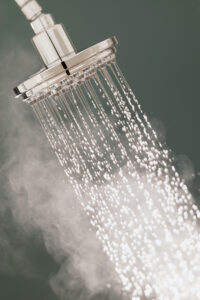
There are several available plumbing fixtures that can help you conserve water which protects the environment and lowers your bills.
The plumbing in your home is one of the most important structural components – when it stops working, pretty much everything in the home stops too. You can’t go about your day safely for more than a few hours without fresh, clean water and a toilet, after all. Those same plumbing fixtures that make your home safe and comfortable could also be the source of tremendous water waste – and wasted water is bad for both the environment and your budget. Thankfully, engineering has the answer, and brilliant designers are working to continue making plumbing fixtures more efficient without sacrificing quality. Let’s investigate five examples of modern plumbing fixtures that can help you to conserve water.
Water-Saving Faucets
One of the most effective updates you can invest in is new faucets since these tend to be the biggest water-using fixtures. Water-conserving faucets use gaskets to limit the flow of water while also aerating the water, so there is no decrease in pressure. The result is a faucet that uses less water without you noticing it. The average consumption of a standard faucet is 2.2 gallons per minute which is cut to 1.5 gallons per minute with a water-saving faucet.
Performance Shower Heads
Similar to faucets, shower heads are another prime source of water waste. A typical shower head uses slightly more water than a standard faucet, at about 2.5 gallons per minute. A performance shower head can lower that to 1.75 gallons per minute, which would result in saving thousands of gallons of water annually in an average household. Additionally, you might even see lower electric bills since you use water and therefore have to heat less water. Performance shower heads are slightly different than aerating ones, so ask your plumbing professional to help you choose the right one for you.
High-Efficiency Toilets
Toilets are usually one of the first fixtures to be swapped out for water-conserving models. Traditional toilets (those installed prior to 1993, generally) use 3.5 gallons per flush, but these days nearly 60% of toilets have been swapped for water-conserving models that decrease that to 1.3 gallons per flush. There are even models available that use grey water for flushing, further decreasing your water consumption.
Hot Water Systems
Your water heater is another fixture that can be a huge source of wasted water. Older heaters use a lot of energy to heat a large amount of water and then push it through a complex pipe system to the fixtures that need it. Often the water loses heat along the way, and users let it run for a while, waiting for hot water. Recirculating hot water systems alleviate these issues and may qualify for tax breaks. Alternatively, tankless hot water heaters may also help you lessen your environmental impact.
Pressure-Reducing Valves
Most homes can operate efficiently with a water pressure of about 35 psi, but many homes have a far higher pressure in their pipes. Ask your plumber to check your psi when they are checking the rest of your plumbing, and if your pressure is higher than needed, they can install PRVs or pressure-relieving valves to lower the pressure, decrease your water waste, and protect your pipes.
Call Mahon Plumbing Today
If you still have more questions regarding your plumbing, we here at Mahon Plumbing are here to help. We have been serving the wider Baltimore area since 1994, so we have 25 years of experience to back up our fantastic service! Call us at our Baltimore location at 410-766-8566 or our Pasadena location at 410-636-7944. Be sure to keep up with us on social media by following us on Facebook or Twitter.
